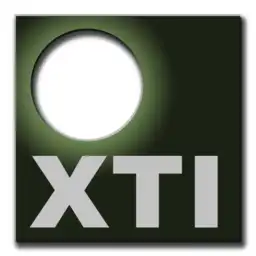There is a great program called X-Title Importer, by Andreas Kiel, that accepts subtitles in several formats, including.srt, and creates XML files for FCP X. How the Template is created is a little different! I suspect that XTI takes care of formatting more efficiently but am unsure exactly how. FinalSRT is pretty easy to use and fast in the short run. X-Title Importer amongst other things allows you to save a Template which means after you set this up once you can save a step every time. How the Template is created is a little different! I suspect that XTI takes care of formatting more efficiently but am unsure exactly how. FinalSRT is pretty easy to use and fast in the short run. X-Title Importer amongst other things allows you to save a Template which means after you set this up once you can save a step every time. X-Title Importer for Caption just went online.
Since joining OIT as a video producer last year, my responsibilities have broadened to include animation and its integration into our production workflow. Our process normally incorporates 2D animation however we see a need for 3D animation/modeling rising on the horizon. Utilizing Adobe Illustrator, After Effects, and Cinema 4D lite, I created a short sequence intended to illustrate and encapsulate the nature of our newly renovated home here in the Telcom building: The Technology Engagement Center (TEC) Ftn driver.

As with any production project, I started with research and a previsualization. The TEC center is home to 3D printers, laser cutters, and CNC routers. It’s a workspace designed specifically for the collaboration and creation of ideas. This guiding principle informed my process.
Xti X-title Importer Download
I decided to animate three robots working together to create the logo for the space thereby illustrating the intersection of cooperation and cutting edge technology that the TEC embodies.
Modeling is the first step of the actual creation process. I “built” the robot arms in Cinema 4D out of basic geometric shapes with three articulation points for movement that turned my models into virtual puppets. I created two 3D printer bots and one router bot. Rigging is the second step of the process. Each arm section needed to move in tandem with other attached sections.
Xti X-title Importer List
I then took the Adobe Illustrator file of the TEC logo and broke it into individual pieces as prep for animation. Dk digital laptops & desktops driver. Each letter would be 3D printed with the multicolored hexagon portion of the logo, “etched” into the placard I was creating.
Xti X-title Importer Software
The next step is animation. This is the most difficult part in my opinion as timing has to be perfect for each puppets’ role on the virtual stage. I decided to coordinate the animation from the ground up. I first animated each of the individual characters of the logo to “rise” out of the placard. I then animated each of the two 3d printing arms to match the “rising” of the letters so that they could be completed in two “passes” and simulate the feel of the 3D printing process. Next, I matched the “router” arm’s movements with the progressive “embedding” of the multi-colored hexagons. Finally, “lit” the scene with virtual lights and animated a camera to sweep around the screen to give it a more cinematic feel.
After effects out of memory 1k requested. Try to reduce the amount of memory allocated to other applications: Select After Effects CC Preferences Memory. Change the RAM reserved for other applications and click OK. I cannot for the life of me figure this one out, Google has not shown me any answers. I am editing some masks of an AI file in After Effects and I will randomly get the following error: 'After Effects: Out of memory. (5059K requested) (23::40)' Forcing me to the Task Manager and end AE's process to close it all down and restart the program.
This completed the 3D animation part of the sequence. Finally, Steve requested that I create a laser etched “burn-in” of the Duke logo in the lower left to represent the laser cutter. I brought the animated 3D sequence into After Effects and did a progressive write on of the Illustrator logo that was revealed via an animated mask. I then used two particle emitter layers. One followed the animation with sparks and the second followed with smoke. I then attached the end of a generated laser layer to follow the two emitters. After reviewing the final animation, I felt that another emitter layer needed to be added to the 3D animation to simulate flakes coming off of the placard while the hexagons were etched in. I’m pretty happy with the result! The whole project took about 12 hours and was both a professional development exercise for me and a useful end product for the TEC. Check it out and feel free to come over to explore the TEC!
